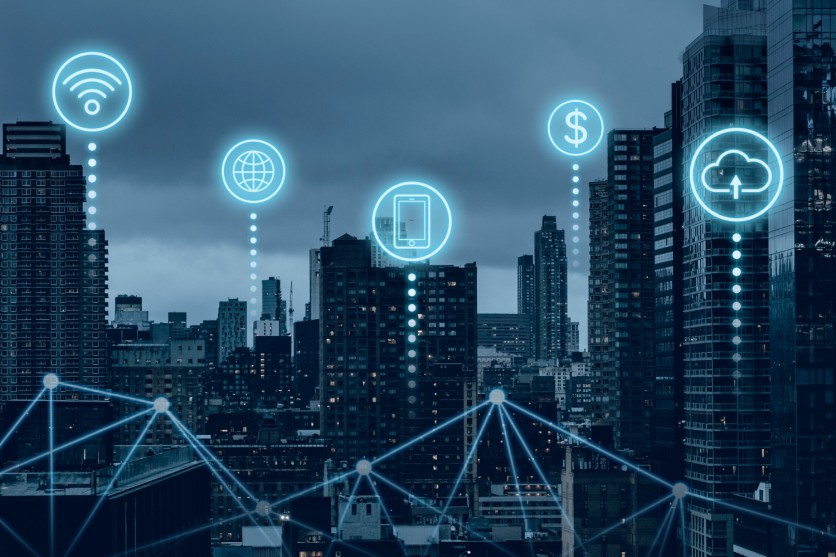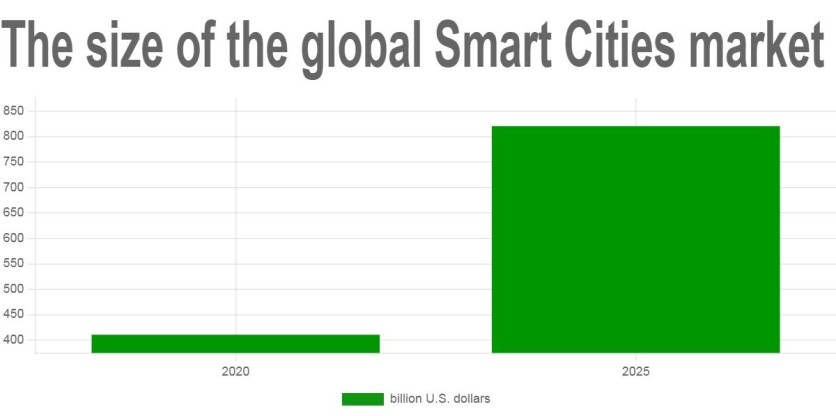
Abstract:
This article explores current trends in smart cities, where modern technologies are utilized to optimize resource management and enhance the quality of citizens' lives. The author examines security systems, efficient resource management, including energy and transportation, as well as the environmental sustainability of smart cities. The material underscores the importance of smart cities in the contemporary world and their potential to ensure safety, efficiency, and sustainability in urban environments.
Keywords: urban infrastructure, Internet of Things, IoT, smart homes
Relevance of Creating Smart Urban Spaces
In our era, as cities become hubs of societal growth, the concept of smart cities attains a pivotal status in optimizing the lives of urban dwellers and reducing negative impacts on the environment. According to UN data, approximately 55% of the world's population currently resides in urban areas, and it is projected to reach 68% by 2050. This trend towards urbanization underscores the need for effective management of urban infrastructure, making smart cities particularly relevant.

A few more figures:
World Bank statistics indicate a growth in energy and water consumption in cities. Smart technologies allow the optimization of resource consumption, reducing costs and minimizing negative environmental impact. Efficient resource management becomes an integral part of sustainable urban development.
According to the reports of the World Meteorological Organization, extreme weather events have increased due to climate change. Smart cities, utilizing sensors and data analytics, can respond more effectively to emergencies and mitigate the consequences of climate change. The active use of Internet of Things (IoT) technologies in urban planning and management helps create safer and more sustainable urban environments.
Gallup research data suggests a higher life satisfaction level in smart cities. Innovative solutions, such as quick access to information and improved transportation systems, contribute to the enhancement of residents' lives.
Thus, the relevance of smart cities is emphasized not only by the growth of urban populations but also by the need for more efficient resource management, improvement of the quality of life for city dwellers, and addressing climate challenges. Statistics vividly demonstrate that smart cities are not just a technological trend but a necessity for our future.
Structure of a Smart City
A smart city is a city that utilizes advanced technologies and communication to optimize operations, enhance citizens' quality of life, and improve resource utilization efficiency. It is based on the installation of sensors, the implementation of the Internet of Things (IoT), artificial intelligence (AI), and data analytics for collecting and analyzing information about urban infrastructure and citizen behavior. In smart cities, various systems and devices, such as traffic lights, public transport, street cameras, and water and electricity meters, are connected in a unified network, enabling centralized control. The gathered information is used to optimize traffic, manage lighting, ensure safety, and provide sustainability for urban infrastructure.
Smart technologies also include waste management modules, air quality monitoring, building energy consumption management, security systems, and public transport systems. All these components work collaboratively, exchanging data and reacting to changes in real time. The goal of smart cities is to create a more convenient, safe, and sustainable environment for residents and businesses, minimizing negative environmental impact and optimizing resource usage.
Key elements of these systems include:
- Smart Security Systems: Safety is a fundamental aspect of smart cities. Modern video surveillance systems with real-time image processing and face recognition algorithms enable urban services to quickly respond to incidents and crimes, creating a secure environment for residents and aiding in crime prevention.
- Smart Lighting Systems: IoT-based lighting control systems allow for the optimization of energy consumption. Streetlights with automatic brightness adjustments based on motion and ambient lighting contribute to reducing energy consumption and making urban lighting more efficient.
- Smart Transportation Systems: Integrating IoT into public transport enables the creation of smart transportation systems. This includes real-time tracking of public transport, route optimization, and traffic management. Such systems reduce commuters' travel time and decrease emissions of harmful substances into the atmosphere.
- Smart Waste Management: Sensors installed in waste containers can transmit information about their fill level to the control center. This optimization prevents container overflow, reduces litter on the streets, and contributes to efficient waste collection.
- Smart Water Management: Monitoring and management systems for water supply help identify leaks and optimize water usage. This not only saves water but also reduces maintenance costs for water infrastructure.
Challenges in Creating Smart Cities in the Modern World
Smart cities represent innovative urban spaces where the application of modern technologies and network solutions contributes to improving the quality of life for citizens and optimizing the management of urban infrastructure. Examples of successful smart cities include:
- Seoul, South Korea: Seoul has implemented a data collection system on citizens' movements through mobile applications, helping optimize transportation infrastructure and reduce traffic jams.
- Copenhagen, Denmark: The city utilizes smart lighting systems that respond to people's movements, contributing to energy savings.
- Singapore: Singapore actively employs the Internet of Things for air quality monitoring, traffic management, and optimization of water resource utilization.
According to forecasts, the size of the global smart city market is expected to grow from approximately $410.8 billion in 2020 to $820.7 billion in 2025, with an average annual growth rate of 14.8%.

Despite the popularity of the technology, the global implementation of smart urban solutions faces significant challenges. Primarily, these challenges involve data privacy and security—the collection and storage of information about city residents require strict protection against cyber threats and breaches of confidentiality. Additionally, deploying smart technologies necessitates substantial changes to urban infrastructure, which can be a complex and costly process. Furthermore, the digital divide cannot be disregarded. Not all citizens have equal access to IT technologies, potentially increasing social inequality in cities.
Nevertheless, smart technologies continue to evolve, overcoming these challenges and striving to create more efficient, secure, and convenient urban environments. This is precisely the key goal for enhancing the quality of life for city dwellers. The use of smart security systems, lighting control, transportation, and water supply systems allows cities to become more sustainable, safe, and comfortable for their residents.
Sources:
ⓒ 2026 TECHTIMES.com All rights reserved. Do not reproduce without permission.




